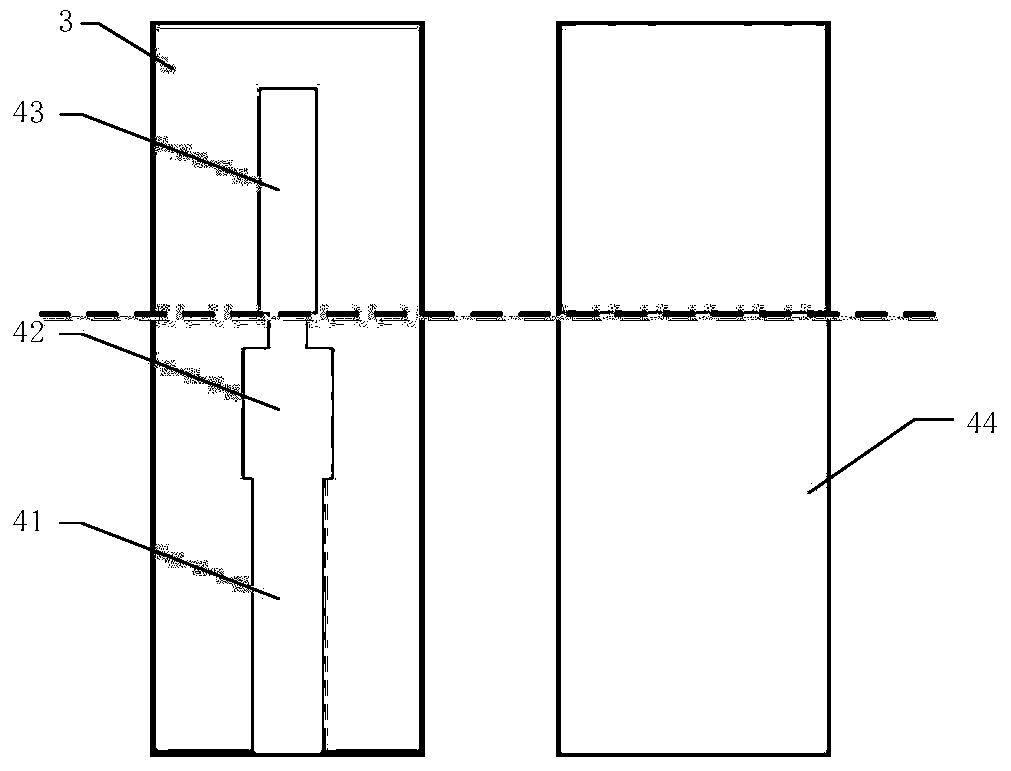A Realization Method of Waveguide-Microstrip Transition Structure in Millimeter Wave Band
A millimeter wave frequency band and transition structure technology, applied in the microwave field, can solve the problems of small size, shortened suspension strip line, and deviation of input impedance of probe circuit from design value, etc.
- Summary
- Abstract
- Description
- Claims
- Application Information
AI Technical Summary
Problems solved by technology
Method used
Image
Examples
Embodiment
[0036] In this embodiment, a 37GHz waveguide-microstrip probe transition structure is obtained by using the implementation method of the present invention, which is used for a 37GHz receiving front-end component of a microwave imaging detector.
[0037] Among them, the system's requirements for the 37GHz receiving front-end components are as follows:
[0038] Working frequency: 37GHz±1GHz;
[0039] Noise figure: ≤4.0dB;
[0040] Waveguide model: BJ320;
[0041] Number of channels: 6 channels.
[0042] From the above index requirements, it can be seen that the 37GHz receiving front-end component has strict requirements on the insertion loss and assembly consistency of the waveguide-microstrip probe transition structure. Combined with the analysis of the entire receiving front-end link, the corresponding waveguide-microstrip probe The technical indicators of the transition structure with probes are as follows:
[0043] Insertion loss: <0.4dB;
[0044] Return loss: <-17dB. ...
PUM
 Login to View More
Login to View More Abstract
Description
Claims
Application Information
 Login to View More
Login to View More - R&D
- Intellectual Property
- Life Sciences
- Materials
- Tech Scout
- Unparalleled Data Quality
- Higher Quality Content
- 60% Fewer Hallucinations
Browse by: Latest US Patents, China's latest patents, Technical Efficacy Thesaurus, Application Domain, Technology Topic, Popular Technical Reports.
© 2025 PatSnap. All rights reserved.Legal|Privacy policy|Modern Slavery Act Transparency Statement|Sitemap|About US| Contact US: help@patsnap.com



